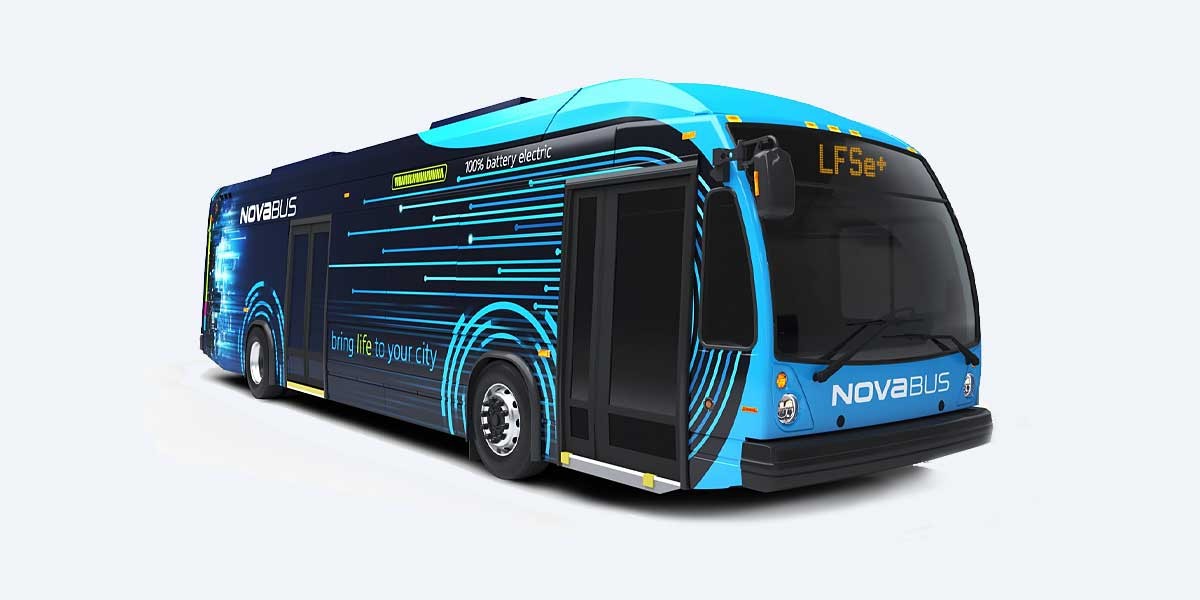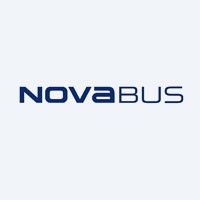NOVA BUS LFSe+
User Rating: 3.15 / 5





What is the NOVA BUS LFSe+?
NOVA BUS LFSe+, an all-electric transit bus, offers zero-emission transportation with modern features. Its advanced electric propulsion system ensures smooth, quiet rides while reducing operational costs. Equipped with fast-charging capabilities, it supports sustainable urban mobility.
NOVA BUS LFSe+ price:
US$ 0 *
| manufactured in | Canada |
| model year | 2021 |
| range (km) | 470 |
| battery (kWh) | 594 |
| bus type | transit bus |
| seats (qty) | 36 |
* Minimum price set by the manufacturer, excluding taxes and additional options

Exterior and Interior photos of NOVA BUS LFSe+
NOVA BUS LFSe+ Review
Introducing the NOVA BUS LFSe+: Revolutionizing Sustainable Urban Transit
From the bustling Canadian industrial heartland, a new titan has arisen – the NOVA BUS LFSe+. Launched in 2021, this all-electric transit marvel marks a significant leap toward sustainable, efficient, and incredibly comfortable urban travel.
Diving into the NOVA BUS LFSe+ Specifications
A far cry from your everyday bus, the LFSe+ is more like a juggernaut on wheels. With a 594 kWh battery, it's capable of covering an awe-inspiring distance of up to 470 kilometers on a single charge. This remarkable range ensures uninterrupted service over extensive urban routes.
Relish Quiet Comfort with the NOVA BUS LFSe+
Hosting up to 36 passengers, the LFSe+ elevates public transit to unprecedented heights. Built upon the trusted LFS platform, this modern chariot seamlessly integrates advanced electric propulsion systems, designed to triumph even in the harshest operational challenges.
Passengers aboard the LFSe+ enjoy a ride of unmatched serenity, thanks to its zero-emission operation. The absence of gear shifts guarantees an impeccably smooth journey, enhancing the overall passenger experience. In sum, this engineering gem transforms your commute from mere travel into an enjoyable odyssey.
Groundbreaking Charging with OppCharge Technology
A standout feature of the LFSe+ is its adoption of OppCharge technology. This intelligent system enables rapid, fully automated charging at route endpoints, ensuring the bus adheres to its schedule without fail. Essentially, it's the epitome of performance, convenience, and reliability fused together.
Vast Interiors and Passenger-Centric Design
The LFSe+ boldly prioritizes interior space without compromising battery storage. It upholds passenger comfort, ensuring the bus is not just a battery vessel. The spacious configuration provides ample room, fostering an atmosphere of complete ease and comfort for all on board.
Energy-Efficient Performance of the NOVA BUS LFSe+
With up to 564 kWh of onboard energy storage, the LFSe+ is set to grace the streets of numerous cities across America. It's perfectly positioned to redefine public transit in regions like Broome County, NY, embodying a shift towards modern, sustainable urban commuting.
The Positive Impact of the NOVA BUS LFSe+
The enthusiastic reception of the LFSe+ is a testament to Nova Bus's expertise. Clearly, the blend of cutting-edge, clean, and sustainable technology responds to the current urban ethos. Hence, the NOVA BUS LFSe+ is not just a vehicle; it's a harbinger of the future of sustainable public transit, realized today.
Manufacturer: Nova Bus
Related Video
Comparison:
Speed
The NOVA BUS LFSe+ cruises at a maximum speed of around 65 mph (105 km/h). Its a decent clip, yet Proterra Catalyst E2, with its slightly sportier setup, pushes to 70 mph (113 km/h). The BYD K9 matches the LFSe+ at 65 mph (105 km/h), while the New Flyer XE40 edges out with 68 mph (109 km/h). Meanwhile, the Van Hool A330 tags along at 62 mph (100 km/h).
Range
When it comes to range, the NOVA BUS LFSe+ flaunts a formidable 211 miles (340 km) on a single charge. It’s a convincing figure but situate it next to the Proterra Catalyst E2s whopping 350 miles (563 km), and it starts to look a tad modest. The BYD K9 offers a solid 160 miles (257 km), while the New Flyer XE40 isnt far behind with 200 miles (322 km). The Van Hool A330 modestly clocks in at 124 miles (200 km).
Power
The NOVA BUS LFSe+ boasts an enduring 320 kW (429 hp), flexing its muscles robustly. Here, the Proterra Catalyst E2 ostensibly trounces with its beefy 440 kW (590 hp) setup. Not far behind, the BYD K9 comes in at 250 kW (335 hp), the New Flyer XE40 holds steady at 235 kW (315 hp), and the Van Hool A330 rounds out the group with a respectable 210 kW (282 hp).
Charging Time
Fast and furious should be the mantra for the NOVA BUS LFSe+ with its 1.5-hour charge time using a high-powered DC fast charger. The Proterra Catalyst E2 thumbs its nose at convention with a full charge in under 2 hours. The BYD K9 is in the running with 2.5 hours, while the New Flyer XE40 edges higher at 3 hours, and the Van Hool A330 might benefit from a bit more pep, taking a leisurely 4 hours.
Price
Here comes the nail-biter: the NOVA BUS LFSe+ is hovering around $900,000 (£690,000 / €780,000). The Proterra Catalyst E2, a princely ride, tips the scales at an estimated $825,000 (£635,000 / €715,000). Theres the BYD K9 at a competitive $770,000 (£595,000/€665,000). The New Flyer XE40 demands around $850,000 (£654,500 / €730,000), and the Van Hool A330 falls close behind at $815,000 (£628,000 / €700,000).
In all, the NOVA BUS LFSe+ presents a compelling package with its blend of robust power, decent range, swift charging, and competitive pricing. It squares off boldly with its competitors, bringing a touch of Canadian finesse to the electric bus showdown.F.A.Q.:
What is the range of an electric motorcycle?
The range of an electric motorcycle can vary widely depending on the model, but typically it ranges from 70 to 150 miles (113 to 241 kilometers) on a single charge.
How far can the electric bus NOVA BUS LFSe+ travel on a single charge?
The NOVA BUS LFSe+ has an impressive range of approximately 211 miles (340 kilometers) on a single charge.
What is the battery capacity and how long does it last?
The NOVA BUS LFSe+ is equipped with a 594 kWh battery. The battery life can vary, but it is designed to last up to 8-12 years depending on usage.
How long does it take to charge the bus fully?
Charging times for the NOVA BUS LFSe+ can vary, but it typically takes around 3-6 hours for a full charge using a high-power charging station.
Are there sufficient/accessible charging stations available for the route?
Many urban areas and transit routes have increasingly accessible charging infrastructure, but it's essential to check local availability and plan routes accordingly to ensure sufficient charging stations.
What is the upfront/initial purchase price of the electric bus/van?
The price for the NOVA BUS LFSe+ is not specified directly in the data, but electric buses typically range from $750,000 to $900,000 (approximately €690,000 to €828,000 or £585,000 to £702,000) based on current market prices.
How do maintenance and operating costs compare to traditional buses/vans?
The maintenance and operating costs for electric buses like the NOVA BUS LFSe+ are generally lower than traditional diesel buses due to fewer moving parts and lower fuel costs.
What is the energy efficiency of the bus?
The NOVA BUS LFSe+ is highly energy-efficient, typically requiring about 1.3 kWh per mile (0.81 kWh per kilometer), making it a cost-effective and environmentally friendly option.
What is the expected lifespan of the bus?
The expected lifespan of the NOVA BUS LFSe+ is around 12-15 years, with the battery likely needing a replacement somewhere around its 8-12 year mark.
What are the emissions and environmental benefits of using the electric bus?
The NOVA BUS LFSe+ produces zero tailpipe emissions, significantly reducing air pollution and contributing to a cleaner, healthier environment compared to traditional diesel buses.







